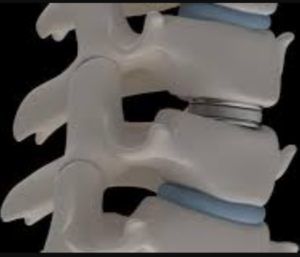
Artificial disc replacement (ADR) is a modern type of spinal circle strategy that uses a foremost (front through the stomach locale) way to deal with supplants an agonizing, ligament, exhausted intervertebral circle of the lumbar spine with a metal and plastic prosthesis (fake circle). Before the advancement of ADR spinal combination was the vital treatment for agonizing degenerative circle infection that neglected to enhance with non operative administration.
(ADR) is procedures in which the specialist will evacuate the whole ailing plate and supplant it with embed that looks and feels like a circle to offer soundness to the spine. This is for the most part done toward the finish of a spinal combination surgery and requires a few days of hospitalization after the operation.
The advantages of ADR include a faster recovery time than spinal fusion and preserved motion at the disc level. The theoretical long term advantage of ADR which remains unproven is the possibility of decreased adjacent level stress and arthritis compared with spinal fusion.

There are three types of disc implants
The Bryan Disc– comprises of two titanium saucers that have in- growth surfaces for bone and a layer external covering that holds water inside to reproduce the ordinary plate space. This plate permits stun retention and interpretation by focusing on the film through pressure of the liquid inside the circle. The titanium is likewise a great deal more MRI compatible if a future MRI of the cervical spine is vital
The pro-disc-C- It comprises of two chrome cobalt amalgam endplates (like stainless steel) with a plastic bearing surface settled to the lower plate. The edges of embed are joined to the vertebra by a focal bottom with an in-development surface. The bottom settles embed until bone development happens into the endplate.
The prestige total disk replacement– It comprises of two chrome cobalt composite endplates (like stainless steel) with a plastic bearing surface settled to the lower plate. The edges of embed are connected to the vertebra by a focal bottom with an in-development surface. The bottom balances out embed until bone development happens into the endplate.
Disc is the delicate padding structure situated between the individual bones of the spine, called “vertebra.” It is made of ligament like tissue and comprises of an external segment, called the annulus, and an inward bit called the core.
The signs for disc replacement may shift for each kind of embeds. Some broad signs are agony emerging from the circle that has not been enough lessened with non-agent care, for example, medicine, infusions, chiropractic mind or potentially non-intrusive treatment. Normally, you will have had a MRI that shows circle degeneration. Regularly discography is performed to check which disc(s), assuming any, is identified with your agony. (Discography is a strategy in which color is infused into the circle and X-beams and a CT output are taken.
There are a few conditions that may keep you from getting a plate substitution. These incorporate spondylolisthesis (the slipping of one vertebral body over a lower one), osteoporosis, vertebral body crack, hypersensitivity to the materials in the gadget, spinal tumor, spinal disease, dismal weight, huge changes of the feature (joints in the back part of the spine), pregnancy, unending steroid utilize or immune system issues. Additionally, add up to artificial disc substitutions are intended to be embedded from a foremost approach (through the guts).
Patient might be rejected from getting and artificial plate on the off chance that he/she beforehand had stomach surgery or if the state of the veins before his/her spine expands the danger of critical damage amid this kind of spinal surgery.

The patient’s recuperation is speedier with disc replacement than fusion. By six to two months after surgery, the manufactured plate is combined well into the spine. On the other hand, it customarily takes around three months for a combination to wind up distinctly immovably settled.
For more Information visit here :- https://www.docopd.com/en-in/lab